1997-10-25 12:44
[ Intemodal Port of Hamburg: Environment-friendly a... ]
Intemodal Port of Hamburg: Environment-friendly and Future-orientd
Intermodal raffic booming in Hamburg
Hamburg is the hub of traffic for North-West Europe.
This is the place where the maritime waterway of the Lower Elbe meets
the international inland waterway of the Upper Elbe and Elbe Lateral C
anal(just east of Hamburg near Geestecht). This is a focal point of G
erman and international rail traffic-virtually all of Scandinavia’s r
ail traffic crosses the Elbe in Hamburg. And this is the intersection
of the pan-European highways E3 and E4 which link Hamburg to Europe’s
motorway network. Hundreds and forwarders and carriers offer reliabl
e and regular distribution services to every corner of Europe-on a jus
t-in-time basis.
In 1996 intermodal container traffic brought some 700,000 TEUs of turn
over to the Port of Hamburg. Almost 20% of this total was accounted fo
r by private-sector operators in which Hamburg port companies play a d
ecisive role. Hamburg is Europe’s most important rail container handl
ing centre. Hamburg is also the market leader in block train traffic t
o and from Central and Eastern Europe, 70% of all containers which hav
e to transported more than 150 km to or from the Port are carriee by r
ail-a high proportion that has earned Hamburg the title of the ‘most
environment-friendly overseas port.”
Some 200 block trains a week link the Port of Hamburg with all the key
international economic centres in Switzerland, Austria, Hungry, the C
zech Republic, Slovakia, Poland, Hungry, Russia, etc.
More than 250 block trains a weekly ensure fast links between the Port
of Hamburg and Germany’s major economic centres, mainly of them over
night services. There are daily departures to Warsaw, Prague, Budapes
t, Vienna and Bazel- to name just a few destinations. These direct rai
l connections with their schedules edparture times take cargoes to cus
tomers safely, reliably and just in time.
In 1996 more than a million freight cars were moved on and 21.9m t of
cargo carried by Hamburg’s Port Railway. Every weekly an average of
165 trains with some 4,400 freight cars are handled on their way to or
from the Port of Hamburg. In the first nine months of 1997 the total
cargo turnover was 17.3m t, 6.5% up on the same period last year. Th
e Port Railway has a 30.5% share of Hamburg’s seaborne cargo turnover
-considerably more than in competing ports.
This year there have also been considerable increases in incoming carg
oes of fertilizers and outgoing cargoes of iron ore and petroleum prod
ucts. Container traffic, which accounts for more than a third of the P
ort Railway’s total turnover, rose by 5.3% to 534,200 TEUs. The volum
e of cargo handled rose significantly faster(26%) to reach 8.35m t.
All the combined cargo service providers have been equally involved in
this growth of cargo turnover: Transfracht International, Intercontai
ner-Interfrigo with HHLA as its on-the-spot partner, POLZUG, EUROKOMBI
, Metrans, Komblverkehr and Projekt-zug. Together, they managed to at
tract one in four of the containers handled to their rail services(wit
h DB Cargo merely serving as a trucker).
The EUROKAI subsidiary EUROKOMBI carried some 36,000 TEUs of cargo in
1996 while the HHLA subsidiaries HHCE, Metrans and POLZUG each had aro
und 30,000. Each of these operators is expecting about 10% growth for
1997, above all as a result of extensions to their services. For examp
le, POLZUG intends to introduce block-train services to St. Petersburg
, EUROKOMBI departures to Italy, etc.
Rail is only one carrier in the Port’s intermodal pre-and post-carria
ge mix. For example, Hamburg leads its competitors in the North Range
with 8-10 feeder ship sailings a day to destinations on the North Sea
or Baltic.
In 1996 9.2m t of cargo were carried by inlandwaterway vessel. Here,
too, there are indications of growth in 1997, especially in container
transports.
Intermodal raffic booming in Hamburg
Hamburg is the hub of traffic for North-West Europe.
This is the place where the maritime waterway of the Lower Elbe meets
the international inland waterway of the Upper Elbe and Elbe Lateral C
anal(just east of Hamburg near Geestecht). This is a focal point of G
erman and international rail traffic-virtually all of Scandinavia’s r
ail traffic crosses the Elbe in Hamburg. And this is the intersection
of the pan-European highways E3 and E4 which link Hamburg to Europe’s
motorway network. Hundreds and forwarders and carriers offer reliabl
e and regular distribution services to every corner of Europe-on a jus
t-in-time basis.
In 1996 intermodal container traffic brought some 700,000 TEUs of turn
over to the Port of Hamburg. Almost 20% of this total was accounted fo
r by private-sector operators in which Hamburg port companies play a d
ecisive role. Hamburg is Europe’s most important rail container handl
ing centre. Hamburg is also the market leader in block train traffic t
o and from Central and Eastern Europe, 70% of all containers which hav
e to transported more than 150 km to or from the Port are carriee by r
ail-a high proportion that has earned Hamburg the title of the ‘most
environment-friendly overseas port.”
Some 200 block trains a week link the Port of Hamburg with all the key
international economic centres in Switzerland, Austria, Hungry, the C
zech Republic, Slovakia, Poland, Hungry, Russia, etc.
More than 250 block trains a weekly ensure fast links between the Port
of Hamburg and Germany’s major economic centres, mainly of them over
night services. There are daily departures to Warsaw, Prague, Budapes
t, Vienna and Bazel- to name just a few destinations. These direct rai
l connections with their schedules edparture times take cargoes to cus
tomers safely, reliably and just in time.
In 1996 more than a million freight cars were moved on and 21.9m t of
cargo carried by Hamburg’s Port Railway. Every weekly an average of
165 trains with some 4,400 freight cars are handled on their way to or
from the Port of Hamburg. In the first nine months of 1997 the total
cargo turnover was 17.3m t, 6.5% up on the same period last year. Th
e Port Railway has a 30.5% share of Hamburg’s seaborne cargo turnover
-considerably more than in competing ports.
This year there have also been considerable increases in incoming carg
oes of fertilizers and outgoing cargoes of iron ore and petroleum prod
ucts. Container traffic, which accounts for more than a third of the P
ort Railway’s total turnover, rose by 5.3% to 534,200 TEUs. The volum
e of cargo handled rose significantly faster(26%) to reach 8.35m t.
All the combined cargo service providers have been equally involved in
this growth of cargo turnover: Transfracht International, Intercontai
ner-Interfrigo with HHLA as its on-the-spot partner, POLZUG, EUROKOMBI
, Metrans, Komblverkehr and Projekt-zug. Together, they managed to at
tract one in four of the containers handled to their rail services(wit
h DB Cargo merely serving as a trucker).
The EUROKAI subsidiary EUROKOMBI carried some 36,000 TEUs of cargo in
1996 while the HHLA subsidiaries HHCE, Metrans and POLZUG each had aro
und 30,000. Each of these operators is expecting about 10% growth for
1997, above all as a result of extensions to their services. For examp
le, POLZUG intends to introduce block-train services to St. Petersburg
, EUROKOMBI departures to Italy, etc.
Rail is only one carrier in the Port’s intermodal pre-and post-carria
ge mix. For example, Hamburg leads its competitors in the North Range
with 8-10 feeder ship sailings a day to destinations on the North Sea
or Baltic.
In 1996 9.2m t of cargo were carried by inlandwaterway vessel. Here,
too, there are indications of growth in 1997, especially in container
transports.
많이 본 기사
- 컨운임지수 넉달만에 2500선 넘어…6주 연속↑상하이항 5000만TEU·싱가포르항 4000만TEU 나란히 돌파태웅로직스, 한화토탈에너지스 우수 파트너사 선정BDI 1015포인트…케이프·수프라막스선 하락세 이어져해양수산부, 김혜정 신임 부산해수청장 선임대한조선, 그리스 선사 발주 석유제품운반선 4척 동시명명SK인천석유화학, 3300t급 급유선 도입…“서해 벙커링시장 경쟁력 강화...강도형 해수부 장관, “새해 글로벌공급망 관리 중점 추진”인천신항 선광신컨테이너터미널, 전기구동 야드트랙터 13대 도입해운협회, 부산항내 중대재해 예방 안전캠페인
- 해운조합, 전환교통지원사업 24일까지 공모여수해경, 해양환경관리 모범선박 예인선 <세진 101>호 선정경기평택항만공사, 평택·당진항 배후단지 업무편의시설용지 분양관세청, 설맞아 수출입화물 선적지원·24시간 통관등 특별대책 시행인사/ 우진글로벌로지스틱스‘항만효율화 공로’ 주성씨앤에어 박진수 대표, 해수부 장관표창 영예부음/ 한국선급 최원준 부사장 모친상롯데글로벌로지스, ‘소비자불만해결 우수사업자’ 선정BPA, 신년맞이 동절기 부산신항 안전관리 실태 점검케이조선, 미국선급서 암모니아 이중연료추진 제품운반선 설계인증 획득
스케줄 많이 검색한 항구





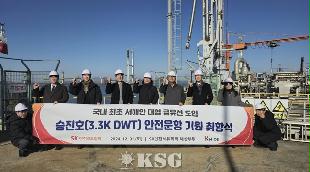

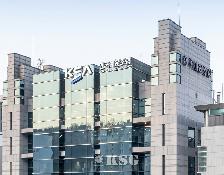
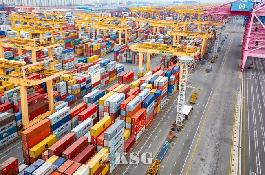
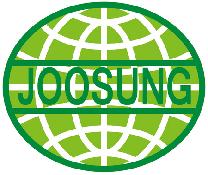



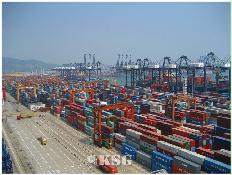
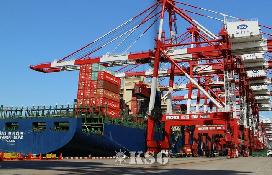
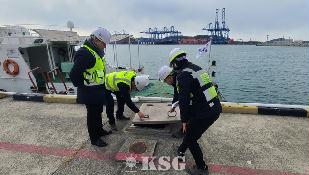
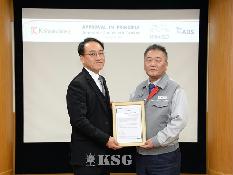
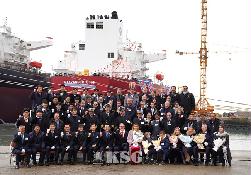

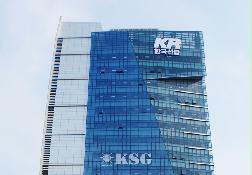
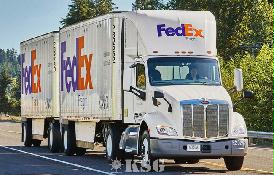
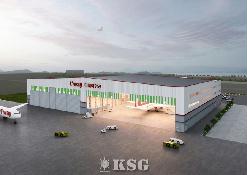
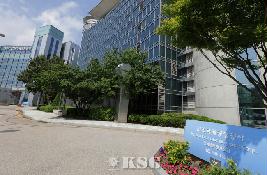

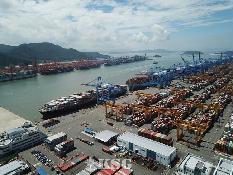
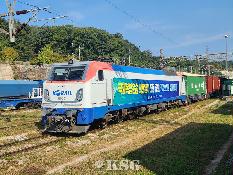
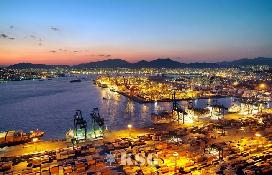
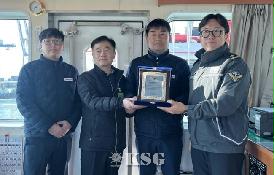
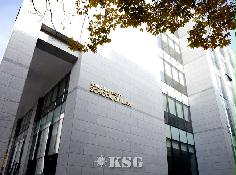
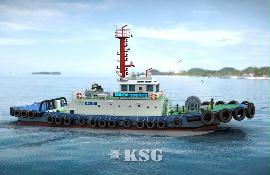
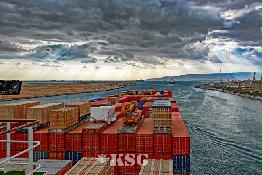








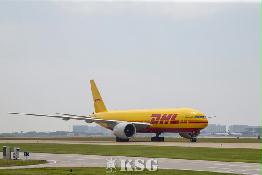
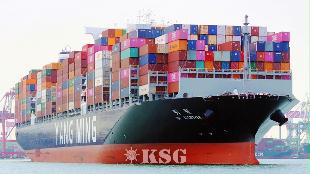
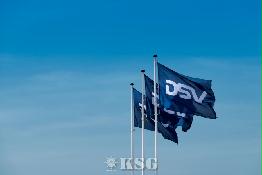
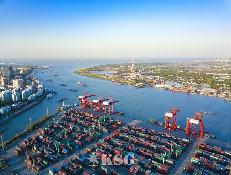
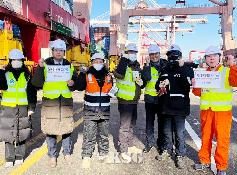








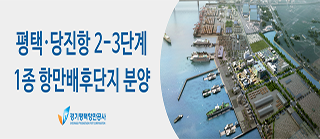












0/250
확인